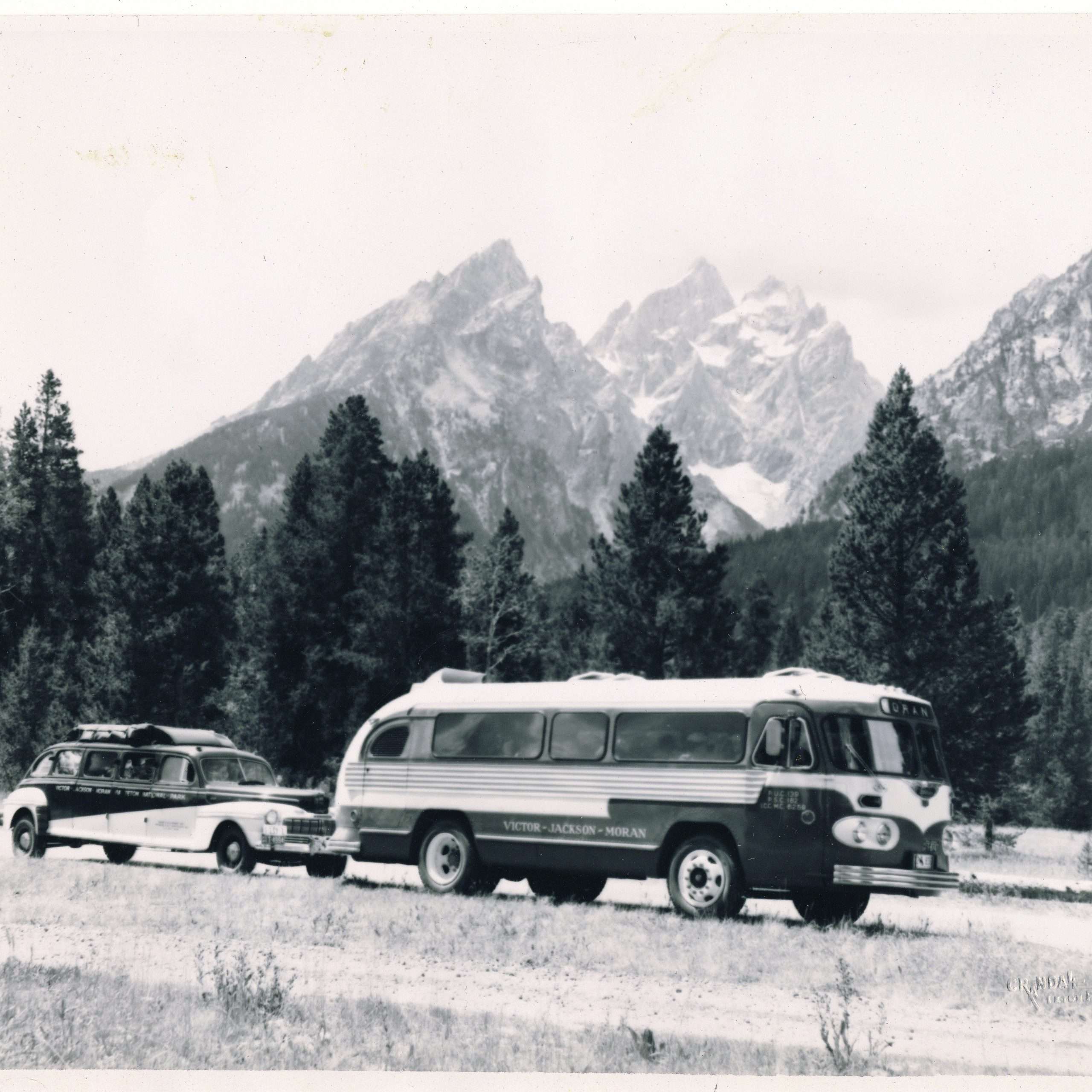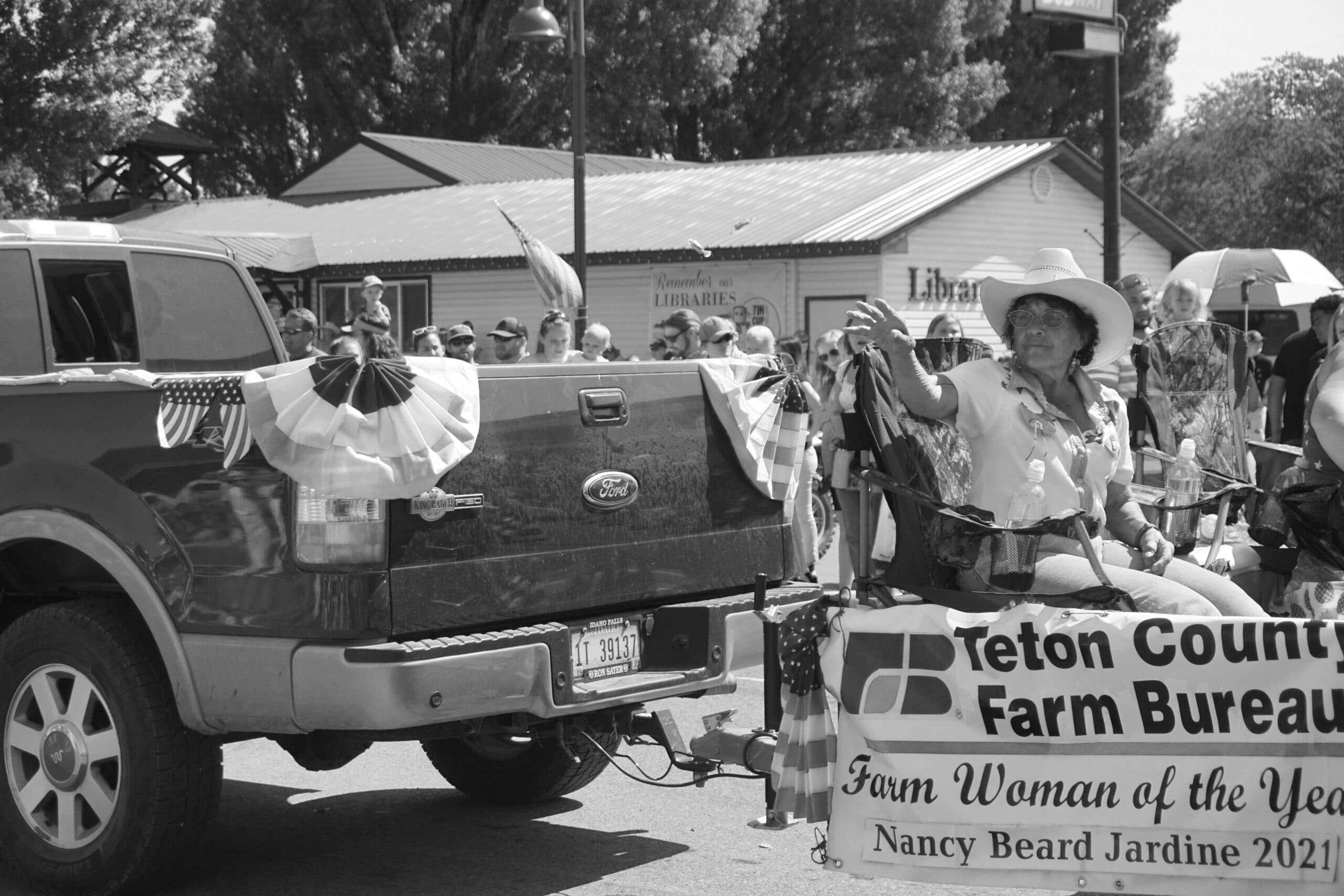20 Years of Trust
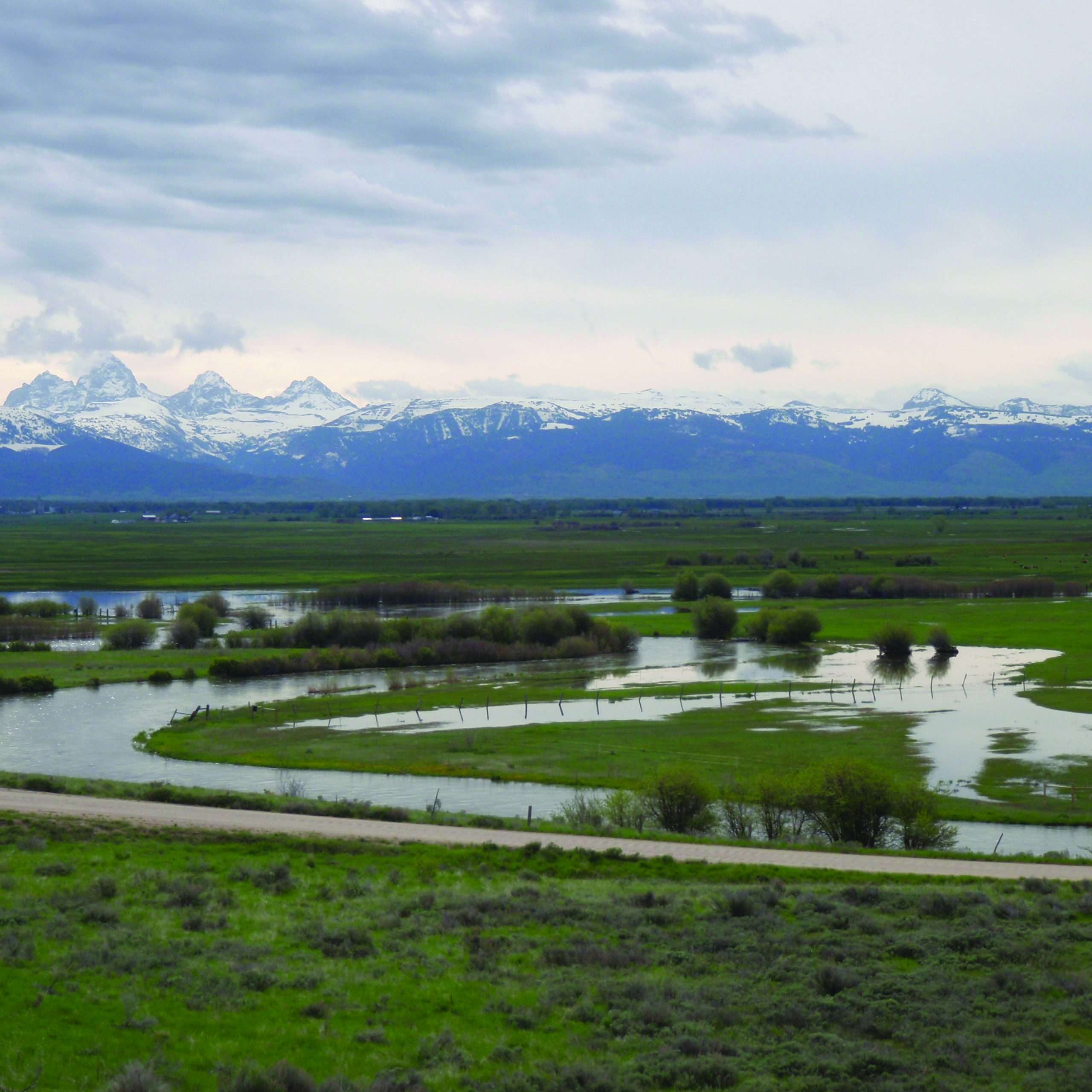
Renee Hiebert
It wasn’t a big day for wildlife sightings down by the Teton River. Midday in early January rarely is. But as Chet Work, executive director of the Teton Regional Land Trust (TRLT), and I skied across the Six Springs Ranch, forded its partly iced creeks, and weaved through the wetland’s dense willows, we flushed a pair of Wilson’s snipe out of a creek bottom, were inspected by a pair of bald eagles in a tree high above us, and surprised a moose family of four, which trotted off to hide themselves in a deeper thicket.
“These species are what it’s all about,” said Work. “That’s why we are here.”
Indeed, these are just three on a list containing dozens of Species of Greatest Conservation Need that the TRLT takes into account as a biodiversity qualification when considering land for conservation and stewardship. Some other iconic species on the list are the trumpeter swan, American white pelican, sandhill crane, gray wolf, and grizzly bear.
The three-hundred-acre Six Springs Ranch is one of the 119 conservation easement properties that have been put under stewardship of the TRLT over the past twenty years. The organization’s service area is the entire Upper Snake River Watershed, covering 5.8 million acres.
The Medicine Lodge Creek property, situated northwest of Dubois, Idaho, is another great example. At 2,617 acres, it brings expanded diversity by adding dry upland habitat to extensive wetlands and riparian corridors. This easement also includes some of the human values that TRLT works to conserve. Views of the distant Italian Peaks and the Red Conglomerate Mountains will forever be protected with this land in trust, and the legacy of ranching will remain intact.
The size of individual easement properties is less important than the richness of the biodiversity, the connectivity among parcels, and the overall combined acreage. Particularly important are connections that maintain corridors migrating wildlife follow from their summer grazing habitats to critical wintering grounds. For example, one contiguous series of lands provides access for ungulates such as mule deer, elk, and moose to the Sand Creek Desert in the sagebrush-steppes of western Fremont County.
The TRLT is staffed by impressively qualified individuals, their resumes sprinkled liberally with M.S. and B.S. biology and environmental science degrees from esteemed universities. With many years of combined experience, this capable team of professionals produces tangible results. A position at the TRLT offers an opportunity to manage many and varied resources, from mountains to wetlands, and has resume-building cachet: A recent Resource Specialist opening drew sixty-nine applicants from near and far—even one from the United Kingdom. Through its staff of ten, eleven board members, and thirty-nine partners, the TRLT is able to keep tightly to its mission: “To conserve agricultural and natural lands and to encourage land stewardship in the Upper Snake River Watershed for the benefit of today’s communities and as a legacy for future generations.”
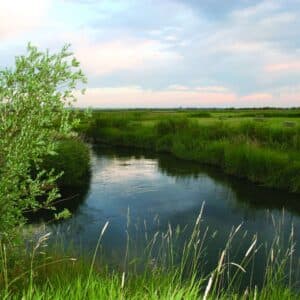
Genesis of the Teton Regional Land Trust
This large ambition was not born overnight. In 1990, Michael Whitfield was the founding member of the original Teton Valley Land Trust, whose service area comprised just the Teton Basin. Mostly because of its prominent wetlands, this basin is ranked as the number-one private lands conservation priority area within the Greater Yellowstone Ecosystem (GYE). Ironically, its beauty, diverse wildlife, and location along the west slope of the Tetons are the very qualities that could bring about more and more destructive human intrusion.
Whitfield’s vision, even twenty years ago, projected that the runaway pro-development, instant-resort values taking hold in places like the Colorado Rockies could equally target and impact the natural environments of Teton Basin. Whitfield holds an M.S. degree in biology from Idaho State University, was a Ph.D. candidate at Montana State University in conservation biology, and has conducted extensive field research on raptors in the GYE. What better person to lead the charge?
The Land Trust’s first effort took five years to bear fruit. The first easement was a discovery process in itself: Without the benefit of staff or pay, Whitfield navigated the myriad and complex pre-qualification, contractual, land-use, and stewardship details. It was signed into easement in January 1995. Thus began a proactive, collaborative nonprofit community organization that creates the opportunity for landowners to be proud partners in a conservation movement, while still holding on to their land.
In 1998, the Teton Valley Land Trust joined with the Fremont Heritage Trust to become the TRLT. The Six Springs Ranch is the land on which the TRLT’s offices sit today, occupying the original, converted and expanded farmhouse south of Driggs. In 2009, the TRLT met the rigorous quality standards set forth by the national Land Trust Alliance and was awarded the distinctive title of Accredited Land Trust.
Of the 5.8 million acres of land within the Upper Snake River Watershed, 3.7 million acres, or 63 percent, are public lands (state or federal) and 2.1 million acres are held privately. The efforts of the TRLT have brought more than 29,000 acres, or about 1 percent, of those private lands under protection.
“It is not the quantity, but the quality of the land based on our essential values,” explained Matt Lucia, TRLT stewardship director. “Landowners are increasingly coming to us as they see the importance of protecting the wild nature of the region and its ranching heritage. Otherwise, when we see value and need in an area of private land, and it seems to meet our criteria, we will approach the landowner and ask that a conservation easement be considered.”
The 2009 addition of the 198-acre Breckenridge property is one of the more highly celebrated easements in TRLT history. Magnificent views that greet travelers as they descend into the valley from the north are now preserved. The Breckenridge easement contains wetlands, including one mile of Teton River frontage (twenty miles of the Teton River are now TRLT-protected; 110 miles of river and stream frontage total), lower portions of Spring Creek, and important wildlife habitat with elk, moose, and white-tailed deer wintering grounds. This easement also protects a four-generation family holding that began as a ranching operation in the late 1800s. It was the second conservation easement put in TRLT stewardship for the Breckenridge family, and they are contiguous—making it even more valuable for species such as long-billed curlew, Columbian sharp-tailed grouse, black-crowned night heron, and Yellowstone cutthroat trout.
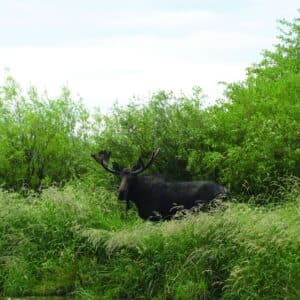
Nuts and Bolts
In the creation of an easement, landowners do not give up their land or sell it to the TRLT. They continue to own it, and the TRLT’s responsibility is to provide stewardship to see that the land is managed in perpetuity under the terms of the contract. The contract lays out what the landowner may or may not do on the land in the name of best conservation, which usually involves little or no development of real estate or commerce (although ranching and recreational operations may continue), and may well include land-improvement projects such as river bank restoration and wetlands enhancements. Landowners may even sell the land—but the contract stays in effect.
The easement process contains many steps; certain specific “easement criteria” must be satisfied before negotiations commence. TRLT staffers compile inventories of flora and fauna, draw up recommendations for land improvement, and provide topographic maps and aerial photographs. This baseline report establishes whether the land contains habitat for endangered, threatened, and/or rare species; is part of a migratory corridor; and/or is actively farmed or has historic buildings. View corridors, ecosystem analysis, and fish habitat all go into the mix.
The next step involves a discussion in which the easement is described and the landowners’ various requests and options are reviewed. No legal or tax advice is given by the Trust (although alluring tax benefits are a primary incentive for landowners to participate). Title papers must be examined for details of ownership, and a board review is undertaken to ensure that the property meets with the Trust’s objectives. By this time, the land will have been fully evaluated and a plan of recommendation drawn up (land improvements, wetlands enhancement, river bank reinforcement, fence removal, etc.) This forms the basis of the contract that the TRLT now negotiates with the landowner, after which the property goes into the “stewardship process.”
Comprehensive stewardship incorporates 1) an annual (at least) physical inspection of the land to verify that the project is in compliance with the contract, and 2) a melding of the Trust’s mission throughout the service area’s diverse population. Via this concerted outreach effort, the local community is involved and encouraged to participate in the conservation of the easement properties, mostly through volunteer labor and membership. In this way, the value and credibility of the TRLT is enhanced in the eyes of current and potential landowners, financial institutions, and funding partners.
The cost of each individual project can be considerable, especially if the easement is purchased (as opposed to donated by the landowner for tax benefits). The landowner is requested to pay a “stewardship donation” that covers several of the costs directly related to the creation and maintenance of their easement, and the rest of the funds are garnered through yet another responsibility of the TRLT: fundraising as part of their 501(c)(3) nonprofit corporation status with the IRS.
The usual gamut of creative financing sources for nonprofits is used here, such as funding partners (for example, The Doris Duke Charitable Foundation and Ducks Unlimited) and personal contributions from hundreds of donors. The Trust will also accept gifts of land, bequests, and in-kind gifts, and of course there is value in the donated time of volunteers. Major government grants to the TRLT have included $8 million awarded and administered by the US Fish and Wildlife Service, as a result of the leveraged value of lands conserved so far under the North American Wetlands Conservation Act.
Into the Future
The twentieth year of the TRLT fittingly ushered in a new executive director, Chet Work, who started in August 2010. He had worked hand-in-hand with the Land Trust on many projects during his previous position as the East Idaho representative for the Nature Conservancy. A valley resident for six years and loving it, Work’s heart is what pulls him to this vocation.
“Nothing beats the wildlife for me,” he said, as we followed our own ski tracks back to the TRLT office in the old Six Springs Ranch farmhouse. “What drives us is the longevity of what we achieve. It’s a legacy I want to share with my kids.”
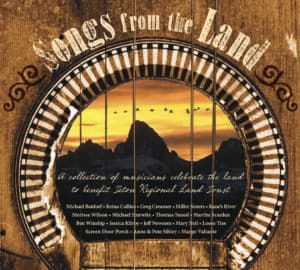 SONGS FROM THE LAND,
SONGS FROM THE LAND,
LYRICS FROM THE HEART

Celebrating twenty years of conservation, the Teton Regional Land Trust last year released Songs from the Land. The collaborative music project features musicians who have touched, and been touched by, the upper Snake River watershed.
Listening to this album sends chills down my spine. It’s quite amazing, actually, the number of talented musicians on the CD who’ve been nurtured from a young age by the Tetons, or drawn to the mountains and valley later in life.
The styles put forth range from soulful rock (Reina Collins’ “Sky and Stream”), to beautiful blendings of bluegrass/folk/country-western (“Stars and Stones” by Kane’s River), to Martha Scanlan’s haunting, syncopated musical poetry (“The West was Burning”). Snippets bring to mind a parade of images: a meandering stream fed by snowmelt and alive with the flash of a cutthroat trout, pioneer sodbusters and stagecoach robbers, the honking whiteness of a brace of low-flying trumpeter swans, thunderstorms broiling over the Big Holes, autumn fields of wind-whipped barley, injured landscapes, the magic light of sunrise, deserted roads, property repossession, grown-ups playing in the woods like they were kids, and love of a river, love for the mountains, love of place. You’ll even get a lesson in how to properly cook hash brown potatoes.
To learn more about the solo and ensemble performers on Songs from the Land, and to listen to clips from its sixteen tracks or to purchase the CD, visit www.tetonlandtrust.org. Proceeds from its sales benefit TRLT’s operations in land conservation.
It makes a great gift for friend or family, whether they’re here or there. And if you don’t already own it yourself, you really should remedy the situation. – Michael McCoy


